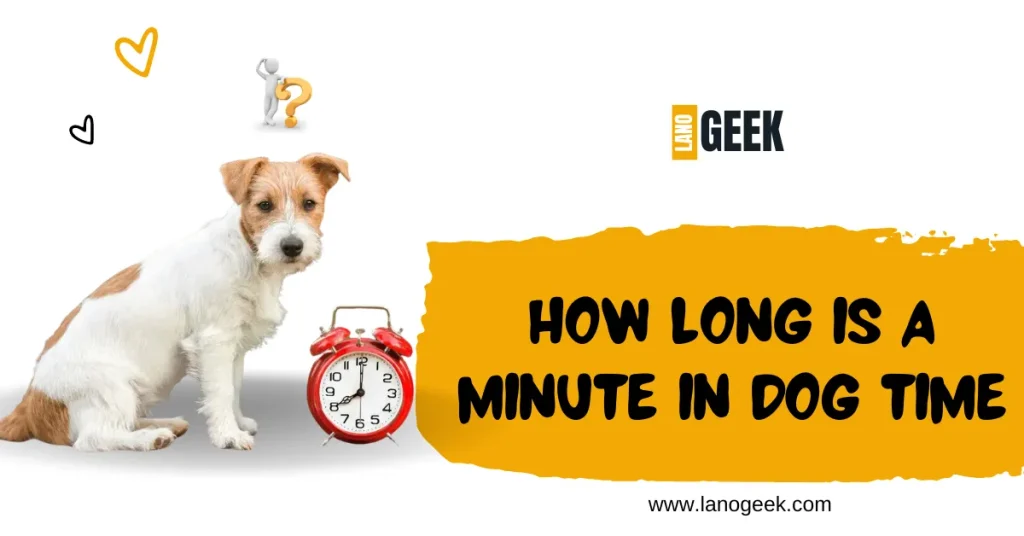Dogs experience time in a way that’s vastly different from humans. While we measure time in hours and minutes, our furry companions rely on their instincts, routines, and environmental cues to gauge the passage of time. Let’s explore together the intriguing answers to these questions and gain a deeper understanding of our canine friends’ unique perspective on time.
Proof Read: Are Duck Eggs Good For Dogs
Factors Influencing Dog Time Perception
Dogs’ perception of time is influenced by various factors, shaping how they experience the world around them. Let’s delve into these factors and understand how they impact our furry friends’ sense of time:
Routines And Environmental Cues: Dogs rely heavily on daily routines and environmental cues to understand the passage of time. From meal times to walks, these routines serve as markers for different times of the day. Changes in lighting, sounds, and scents also play a significant role in how dogs perceive time.
Emotional States: A dog’s emotional state can affect their perception of time. Excitement may speed up their perception, while anxiety or fear can slow it down. Understanding your dog’s emotions and providing a calm and supportive environment can help them feel more at ease and maintain a healthy perception of time.
Breed And Age: Breed and age can also influence how dogs perceive time. Different breeds may have varying levels of energy and activity, affecting their sense of time. Additionally, puppies and senior dogs may experience time differently due to their developmental stages and health conditions.
Owner’s Presence: Dogs often gauge time based on their owner’s presence. When their owner is around, time may seem to pass more quickly as they engage in activities together. Conversely, time may feel prolonged when their owner is away, leading to separation anxiety in some dogs.
Dog Aging And Time Perception
As dogs age, their perception of time may undergo changes influenced by various factors. Let’s explore how aging affects dogs’ perception of time and what implications it holds for their care:
- Maturity Rate: Dogs mature at a faster rate compared to humans, with the rate varying based on breed and size. Small breeds tend to mature more quickly than larger breeds. Understanding this accelerated maturity rate is crucial for providing appropriate care and training at each stage of a dog’s life.
- Age-Related Changes: Aging brings about physiological changes in dogs that can impact their perception of time. Cognitive decline, sensory impairments, and health issues associated with aging may alter how dogs perceive and experience time. Recognizing these changes is essential for addressing age-related challenges and ensuring a high quality of life for senior dogs.
- Care Needs: As dogs age, their care needs evolve, requiring adjustments to accommodate their changing abilities and preferences. Adapting routines, providing mental and physical stimulation, and addressing any health issues promptly are essential aspects of caring for aging dogs. By understanding how age affects their perception of time, we can tailor our caregiving approach to meet their specific needs effectively.
- Quality of Life: Ensuring a positive perception of time contributes to the overall quality of life for aging dogs. Providing them with a supportive and enriching environment, along with companionship and affection, can help mitigate the effects of aging on their perception of time. Investing in their well-being enhances their golden years and strengthens the bond between dogs and their owners.
Quantifying Dog Time
Understanding how dogs perceive time involves examining various factors and measurements. Let’s explore the methods and considerations involved in quantifying dog time:
Perception Through Environmental Cues: Dogs rely on environmental cues, such as routines, scents, and changes in lighting, to gauge the passage of time. These cues serve as indicators of different times of the day and help dogs understand their daily routines and activities.
Scientific Studies and Observations: Scientists study dog time perception through observations of behavior and reactions to different intervals of separation from owners. By analyzing how dogs respond to varying durations of absence, researchers gain insights into how dogs perceive time and its impact on their behavior.
Behavioral Patterns and Learning: Dogs’ behavioral patterns and learning capabilities also play a role in their perception of time. Through repeated experiences and training, dogs develop an understanding of time intervals and anticipate events based on past experiences. Training techniques often incorporate timing and consistency to reinforce desired behaviors and establish routines.
Time Measurement Considerations: While humans measure time in precise units such as minutes and hours, dogs perceive time in a more fluid and subjective manner. Understanding this difference in perception is crucial when quantifying dog time and interpreting their behaviors and responses. By acknowledging the subjective nature of dog time perception, we can better understand and interact with our canine companions.
Aligning Human
Achieving harmony between human and dog time perception involves understanding and accommodating the differences in how each species perceives time. Let’s explore strategies for aligning human and dog time perception:
- Recognizing Dogs’ Perspective: Understanding that dogs perceive time differently from humans is the first step towards alignment. Dogs rely on routines, environmental cues, and emotional states to gauge time, rather than precise measurements. By recognizing and respecting their unique perception of time, we can foster a deeper connection and mutual understanding.
- Establishing Consistent Routines: Consistency is key to aligning human and dog time perception. Establishing consistent daily routines for feeding, exercise, and rest helps dogs develop a sense of predictability and stability. Consistent routines also enable dogs to anticipate events and transitions, reducing stress and anxiety.
- Incorporating Time for Bonding: Quality time spent together strengthens the bond between humans and dogs. Incorporating activities such as playtime, training sessions, and leisurely walks into daily routines fosters positive interactions and mutual enjoyment. These shared experiences help bridge the gap between human and dog time perception and reinforce the bond between companions.
- Adjusting Expectations: Recognizing and accepting the differences in how humans and dogs perceive time requires adjusting our expectations and communication styles. Patience, flexibility, and empathy are essential when interacting with dogs, allowing for a deeper connection and smoother integration of human and dog time perception.
- Tailoring Care and Interaction: Tailoring care and interaction to align with dogs’ unique time perception enhances their well-being and strengthens the bond between humans and dogs. By considering dogs’ preferences, needs, and rhythms, we can create a supportive and enriching environment that promotes mutual understanding and harmony.
Conclusion
Understanding how dogs perceive time is essential for fostering a strong bond and providing optimal care. Dogs perceive time differently from humans, relying on routines, environmental cues, and emotional states to gauge its passage. Recognizing and respecting their unique perspective enhances communication and strengthens the bond between humans and dogs. Achieving harmony between human and dog time perception involves recognizing dogs’ perspective, establishing consistent routines, incorporating time for bonding, adjusting expectations, and tailoring care and interaction. By aligning our actions with dogs’ unique perception of time, we strengthen our connection and enrich our shared experiences. In conclusion, understanding and respecting dogs’ perception of time enhances the quality of our relationships with them and promotes their overall well-being. By embracing their unique perspective, we can create a fulfilling and harmonious bond that lasts a lifetime.






